Review: Samsung DoubleTime for AT&T
Dec 24, 2011, 2:21 PM by Eric M. Zeman
Samsung hopes the DoubleTime will coax the QMD faithful to make the leap to Android smartphones. But is that a smart decision?
Form
Is It Your Type?
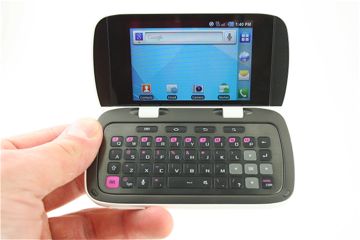
For fans of the quick messaging device (QMD,) there has been a drought of new hardware in recent months — at least as far as feature phones are concerned. Many of the QMDs have shifted to the Android platform, and that brings us to the DoubleTime, a sideways clamshell messaging phone from Samsung that attempts to bring Android not to the masses, but to the mass messenger.
Body
The DT doesn't pretend to be anything other than what it is: A simple(r) smartphone for people who really want a platform for sending messages. The sideways clamshell design is blocky, uses lower-grade materials, and comes across as utilitarian. Most of the outer shell is made of white plastics, though the display and bezel are black. It vaguely reminds me of the E.V.E. robot from the movie Wall-E.
The DT is a chunky device and has some good heft to it. It feels solid enough to hurt someone were it to be thrown (but please don't do that). Despite the plastic materials, the build quality is excellent. It feels somewhat rugged and strong enough to take some abuse. It's comfortable to grip in the hand, though it's a bit thick for stuffing into pockets. You'll be able to squeeze it in there, but it's going to be obvious to others what's in there.
The display takes up perhaps 75% of the DT's front surface. Below that are four hardware keys for accessing the Android controls. These buttons have an excellent feel to them, and the perfect amount of travel and feedback.
The volume toggle is on the left edge of the phone. It's a thin key that has a stiff feel to it. I don't love it, but it's not the worst volume toggle ever. The microUSB port is on the bottom of the DT, while the 3.5mm headset jack and power/lock button are on top. The power/lock button is way too small and too flush with the surface of the DT. It also has poor travel and feedback. The DT lacks a dedicated camera button.
As with many sideways clamshells, the DT opens to two different angles: about 120 degrees for comfortable typing (think miniature laptop), and about 170 degrees for comfortable picture taking. The hinge feels very strong and the open/closing action works really well.
When open, the DT offers a second, roomy display and full QWERTY keyboard for messaging. The four Android control keys are duplicated above the keyboard, which is an odd location if you ask me; I'd prefer to have them built into the bottom row of the keyboard. There is no dedicated row for numbers, though the bottom row offers access to the microphone, ".com" and "www" shortcuts, as well as period, comma, space bar, and question mark keys. There is also a set of arrow keys for on-screen editing, even though the secondary screen is also a touch display.
The buttons themselves are almost perfectly flat and have practically no definition. It's really hard to tell where your thumbs are as they dance from key to key. The one saving grace is that the keys have excellent travel and feedback. I wish the keys had more shape to them. I found it hard to type on this keyboard, which sort of negates the point of having one on a device that also offers a software keyboard. It could be a lot better.
The battery cover is easily removed, and the SIM card can be swapped out without removing the battery. The microSD slot, however, is buried next to the battery, so you won't be able to hot-swap memory cards.
The Three S's
Screen
The DT has two displays. Both measure 3.2-inches and have 320 x 480 pixels. This is a typical size and resolution for displays... or it was, in 2008. They look okay, but not awesome, and certainly not anything like Samsung's high-end Super AMOLED Plus displays. Both displays are bright, but colors are a bit muted, and there's a slight, pixelated haze that gives icons, graphics, and text a fuzzy look. The displays are hard to see outside.
Signal
The DT performed on par with other AT&T devices tested in the same areas. It typically held onto three or four bars of service. I was able to make voice calls when the device showed one bar. It lost the network a couple of times. I did not miss any calls while testing the DT, though. Data performance depended heavily on signal strength.
Sound
Call quality with the DT was pretty good. Voices sounded clean and warm in the earpiece, which was loud enough so that conversations can be heard in most environments. I never experienced any noise, distortion, or other radio-based nonsense. The speakerphone also produced clean tones with voices that are present and free of noise. I wish the speakerphone were capable of higher volumes, but it serves fine for use in a quiet room. Ringers and alert tones were plenty loud and the vibrate alert let me know consistently when I had new messages hitting the phone.
Battery
Despite having two displays, the DT has excellent battery life. With a 600MHz processor and smaller, less-dense screens to worry about, the DT easily manged to last one and three-quarters days between charges. That means I could unplug it at 7AM and not have to worry about recharging it until about 8 or 9PM the following day. I tested the DT with the Bluetooth radio off, but the Wi-Fi and location services on.
Basics
Menus
For whatever reason (which I can't possibly fathom), the DT runs Android 2.2.2 Froyo. Not Android 4.0 Ice Cream Sandwich, not Android 2.3 Gingerbread, but the 18-month-old Android 2.2 platform. It is mostly stock, with only a few, easy-to-miss changes to some of the icons.
The DT has five home screens for customization, though the device supports up to six and as few as three. The main menu is a grid of apps and can be viewed in alphabetical order or in a customized order. It can't be viewed in list form or based on category.
The notification shade contains controls for the Wi-Fi, Bluetooth, GPS, and cellular radios, and can be used to lock the screen rotation.
The dock at the bottom of the home screen has four shortcuts in it. These can be changed, but it is a serious pain in the rear to do so.
As far as performance goes, the DT is a bit slow with respect to screen transitions, and reaction times to input. The lag was frustrating at times. The worst offender was the screen rotation issue. If you woke the device from sleep while it was being held sideways, for instance, and then rotated it to portrait orientation, the screen lagged big-time before changing to match how the phone was being held. Most of the lag I noticed occurred on the home screens. Apps ran OK for the most part.
Calls/Contacts
Calls
The DoubleTime uses the stock Google calling and contacts applications. From the home screen, press the phone icon and the dialer pops open. The DoubleTime offers haptic feedback when you dial numbers on the touch display.
Contacts
The DoubleTime will import all of your Google and Exchange contacts if you have them. Adding Facebook friends is optional. If you press the area next to the profile picture/Android, it will open the contact's page.
Messaging
The DoubleTime runs all the stock Android 2.2 messaging applications, and doesn't offer anything new or unique.
It has the generic email app for POP/IMAP/Exchange email, and the dedicated Gmail application for Google users. Both of these applications are capable and time-tested.
The stock SMS/MMS app is loaded on the DoubleTime, and I didn't notice any different or unusual behavior with it. It offers threaded conversations, as always.
As for IM, the DoubleTime has GTalk on board, and nothing else. If you use Yahoo, Windows Live or AIM, you'll have to seek out third-party apps from the Android Market.
On the social networking front, the DoubleTime is preloaded with Facebook, but nothing else. if you want Twitter or any other social networking services you'll have to hit up the Android Market.
Extras
Media
Music
The DoubleTime uses the old, stock Android media player. It is bare bones, but it does get the job done. You can sort through your playlists, artists, albums, and songs easily enough, and album art comes through properly when tagged to the music. The media player can be sent to the background while you do other things such as browse the web or check Twitter.
There are no third-party music applications pre-installed, though they are easy to find in the Android Market.
Video
The DoubleTime has minimal video play back features. Only the stock Android YouTube player is on board out of the box. Videos captured by the DT or sideloaded are played back in the Gallery app.
Camera
Camera
The DT has a 3.2-megapixel camera with auto-focus, but no flash. Since there is no dedicated camera button, you'll have to use the on-screen app to open it. It opens pretty fast, but not as fast as I'd like.
The viewfinder takes up about the central two-thirds of the display. On the right, there are tools for jumping to the video camera and gallery, as well as the software shutter button. On the left, there are three shortcuts for adjusting the shooting mode (single, continuous, panorama), the scene (portrait, landscape, night, etc.,), and the exposure value.
A deeper settings menu - accessed by pressing the little cog wheel icon - is straight-forward and allows you to alter the white balance, add effects, control image quality and metering, as well as adjust contrast and so on.
Once you press the shutter button, the DT takes about a second to focus and another second to take and save the shot. The process feels natural and there's no delay. The DT takes you right back to the camera mode and doesn't present you with a review screen. You can tap the thumbnail to see the image if you wish.
Gallery
The gallery is the stock Android 2.2 option. Photo albums float in stacks in the main gallery view, and you can sift through them in a chronological timeline.
Editing options are severely limited. Crop and rotate are all you get. Some of Samsung's best devices offer more than this, but at least you get the very basics. Sharing options are solid, and incorporate all the social networking apps on board the DoubleTime, such as Facebook, Picasa, Gmail, etc.
Photos/Video
Photos
The DT's camera performed well for a lower-end phone. The options give you enough control that you can capture good images, though it is often impractical to make adjustments if you're in a hurry to catch a shot.
The images I captured were decent, though some suffered from focus, white balance, and exposure troubles. You'll be able to get Facebook-worthy shots every now and then, but the DT won't replace a dedicated point-and-shoot. Stick to a real camera for important occasions.
Video
The highest quality video setting on the DT is 320 x 240. That's pretty crummy... and so is the video. It's hazy and soft, colors are muted, and there's plenty of lost details in shadows. When you don't have any other tools available, the DT will be able to capture the moment, but you're probably not going to want to watch it anywhere other than on the phone itself.

MPEG-4 format (viewable with QuickTime)
Browse/Customize
Browser
The DoubleTime comes with the stock Android browser. It's a good browser, and running over AT&T's 3G network, it performed well in most of my tests. I noticed slower data speed when the DoubleTime had a weak network connection, but otherwise the browser is just the same as any other Android 2.2 phone.
Customize
The DT has few customization features outside of the normal options. You can set your own ringtones, wallpapers, adjust the home screens, etc., but there are no themes, no fancy color options, and no alternate modes. It's a stock Android 2.2 device, which doesn't give you much.
Extras
Apps
The DT has the fewest apps I've seen on a phone out of the box — just 32. Six of them are from AT&T, and only one - Yellow Pages - couldn't be deleted. There are few extras of any kind outside of the standard stock Android apps. You'll need to head to the Android Market if you want to live it up a little.
Bluetooth
The DoubleTime supports mono and stereo Bluetooth headsets. I had no trouble pairing with either. Sound quality through mono headphones was good; on par with the standard voice calls. Quality through stereo headphones was also good. It also connects with computers and/or other phones for pushing files around.
Clock
The DoubleTime offers the standard Android clock on the lock screen, which is visible when the device is first woken from sleep. It is a nice, large digital read out that's easily visible everywhere except under direct sunlight. It can't be customized, though.
GPS
The DoubleTime offers two options for directions: Google Maps and AT&T Navigator. I enjoy Google Maps and think it does a great job of providing directions. AT&T Navigator is a solid alternative, but AT&T charges $10 per month to use it. Both will get you from here to there with no problems.
Wrap-Up
There's nothing inherently wrong with the Samsung DoubleTime. It's a fine phone in most respects. It's also completely boring. For a device that is obviously aimed at helping bridge the gap between quick messaging devices and mid-range smartphones, the DoubleTime offers few unique or interesting features.
It works well as a phone, battery life is good, apps perform well for the most part, and it can help get the old QMD user in the smartphone door.
For $50 it's hard to knock the DoubleTime for anything serious, and there's a significant lack of $50 QMDs available from AT&T at the moment. So, if an inexpensive smartphone with a keyboard is what you need, the DoubleTime certainly fits the bill.
Comments
No messages


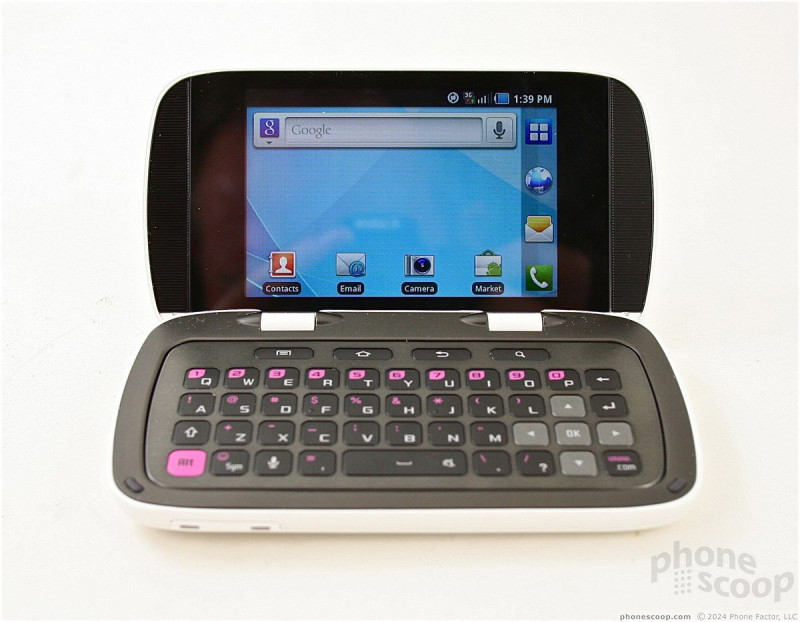

















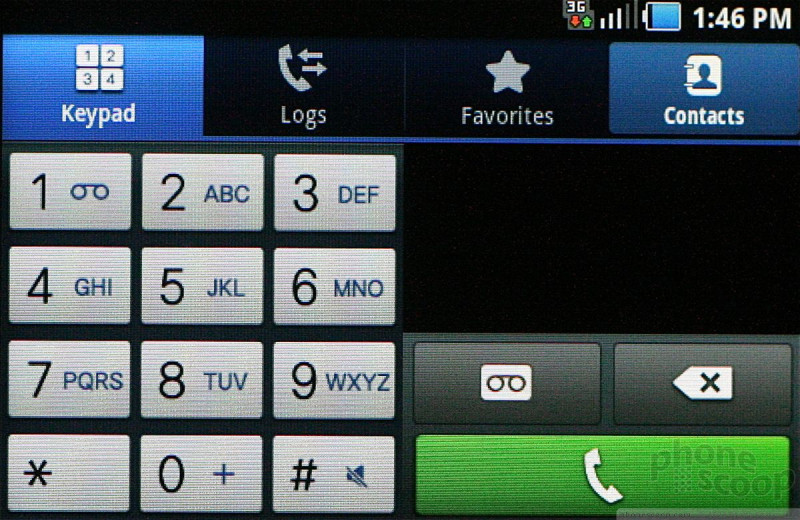




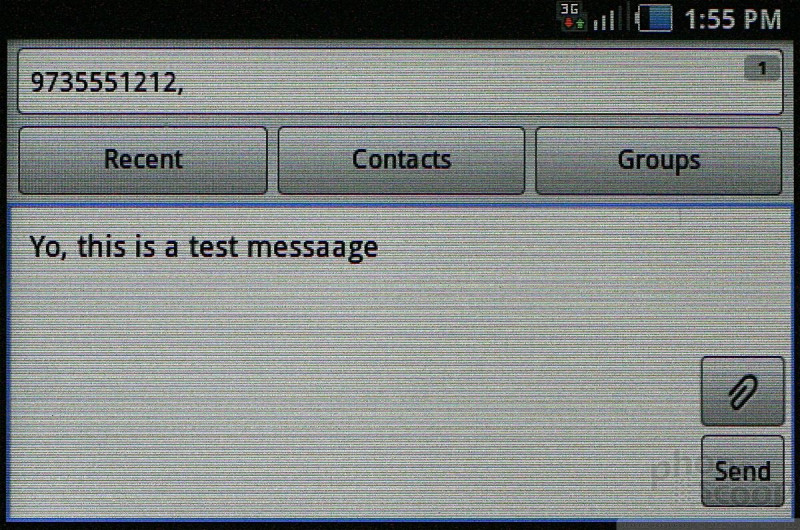







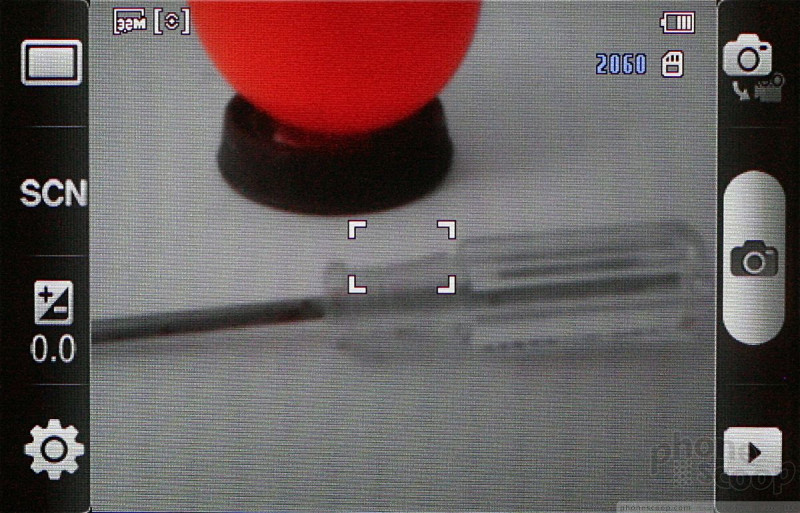



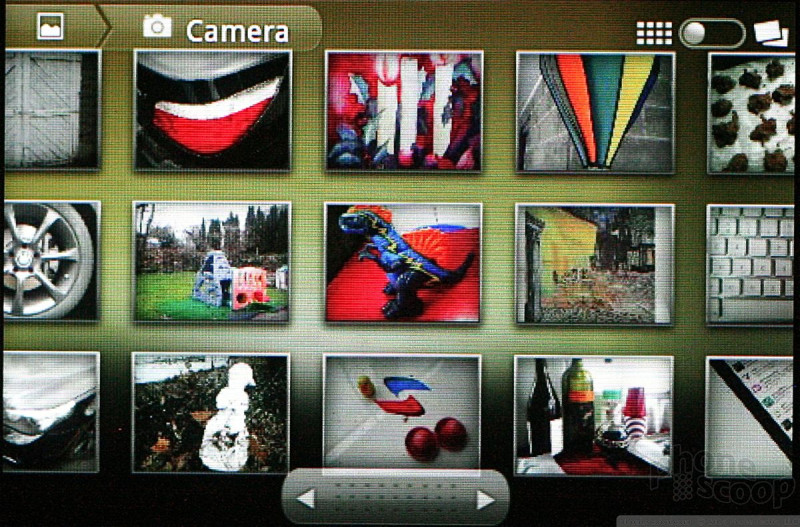



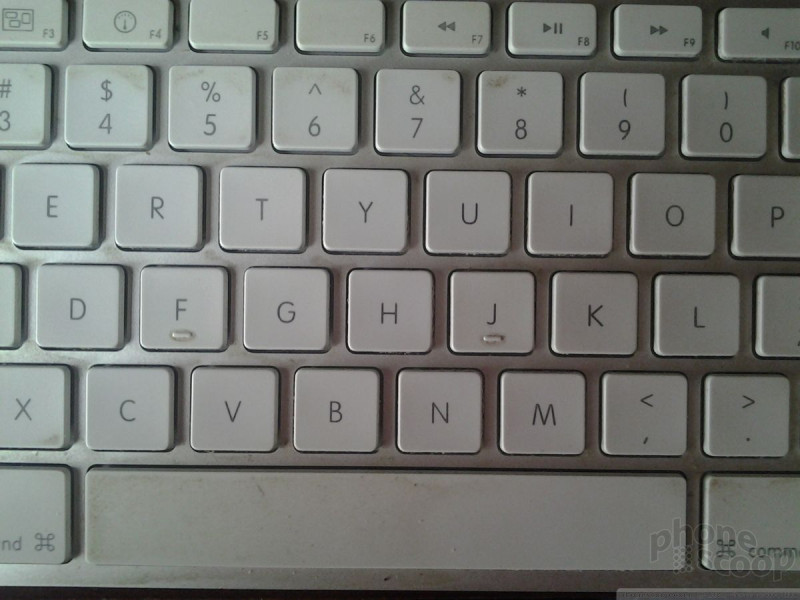
















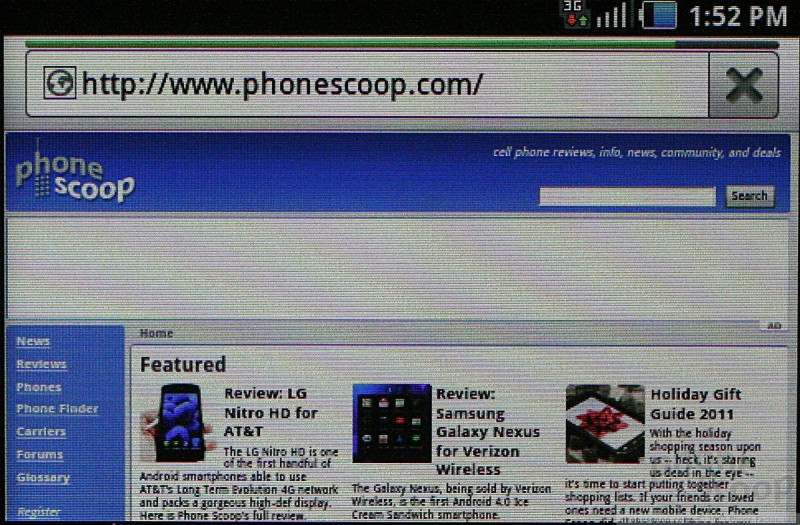



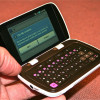 Hands-On: Samsung DoubleTime
Hands-On: Samsung DoubleTime
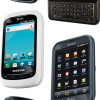 AT&T Announces Five New Android Smartphones
AT&T Announces Five New Android Smartphones
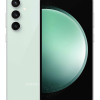 Samsung Brings Back the FE for its Galaxy S23 Series
Samsung Brings Back the FE for its Galaxy S23 Series
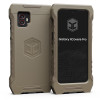 Samsung Brings its Military Phones to First Responders
Samsung Brings its Military Phones to First Responders
 Samsung DoubleTime
Samsung DoubleTime





